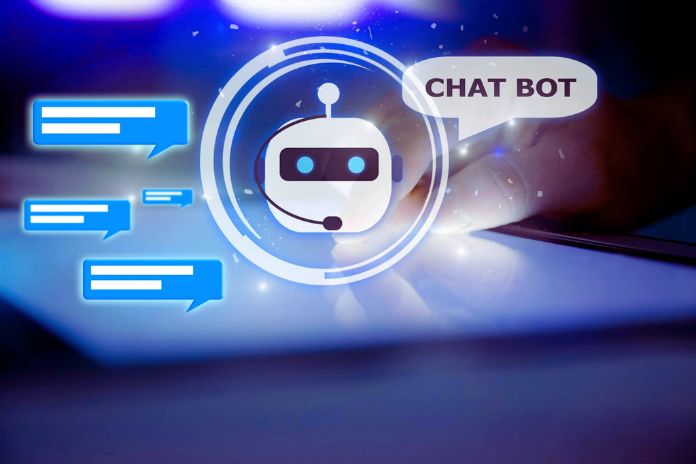One prominent trend that has stood out is the use of chatbots and artificial intelligence (AI) to improve interaction with consumers.
Just like an industrial cooling tower, whose function is to dissipate the heat generated in industrial processes, chatbots, and AI emerge as solutions to dissipate the challenges and complexities of customer service.
What Are Chatbots And Artificial Intelligence In The Context Of Customer Service?
Chatbots are computer programs designed to simulate human conversations and interact with customers in an automated way.
They can be rule-based or use advanced natural language processing and machine learning techniques to enhance your answers.
Artificial intelligence refers to the ability of computer systems to perform tasks that would typically require human intelligence, such as pattern recognition, decision-making, and learning from experience.
Just as e-waste collection aims to efficiently and sustainably collect e-waste, chatbots have the potential to collect and process customer information quickly and effectively.
How Do Chatbots Improve Service Efficiency And Availability?
Chatbots can work 24/7 without rest. This means they are always available to meet customer demands, regardless of the time of day, increasing service efficiency.
In addition, its ability to process large volumes of data in real-time allows for faster and more accurate responses.
Impact Of Artificial Intelligence On Customer Experience
As thermoplastic resins mold themselves to project needs, artificial intelligence can uniquely personalize the customer experience.
Artificial intelligence (AI) has played a vital role in transforming the customer experience across multiple sectors and industries.
This advanced technology has brought countless advantages to companies and consumers, making interactions more efficient, personalized, and satisfying.
One of the critical impacts of AI on the customer experience is the ability to provide 24/7 service and support.
AI-powered chatbots and virtual assistants are examples of this, as they can answer common questions, solve problems and provide relevant information in real-time.
This continuous availability improves the customer experience by reducing response time and ensuring customers can get help when needed, regardless of the time of day.
In addition, AI allows for more effective personalization of the products and services offered.
By analyzing collected data on customer behavior and preferences, companies can create personalized recommendations and tailored offers for each individual. This increases customer satisfaction and also contributes to increased sales and brand loyalty.
How Does Artificial Intelligence Personalize Service And Increase Customer Satisfaction?
Artificial intelligence can provide highly personalized responses and recommendations based on the information collected and analyzed. This creates a unique experience for each customer, increasing customer satisfaction and brand loyalty.
Just as environmental licensing is required to ensure compliance with environmental regulations, implementing chatbots requires careful planning and attention to many considerations.
What Are The Critical Steps To Implementing An Effective Customer Service Chatbot?
Implementing an effective customer service chatbot involves a few key steps. Below are the main steps to create a chatbot that offers adequate support and solutions to customers:
Set Clear Goals
Before starting development, it is crucial to define the specific goals of the chatbot. Determine what tasks it should perform, what customer issues it should solve, and what metrics will be used to measure the chatbot’s success.
Choose The Right Platform
There are several platforms and frameworks available for creating chatbots. Choose the one that best suits your company’s needs and offers features like integration with customer service systems, data analysis, and personalization.
Identify Customer Needs
Understand the main questions and problems faced by your company’s customers. This will help design the chatbot to answer frequently asked questions and provide relevant support.
Develop A Solid Knowledge Base
The chatbot needs access to accurate and up-to-date information to provide relevant answers. Create a comprehensive knowledge base fed by FAQs, documents, manuals, or other appropriate resources.
Design An Intuitive Interface
User experience is critical to chatbot effectiveness. Create an easy-to-use interface with natural language and clear instructions to guide users.
Implement Artificial Intelligence
Artificial intelligence is essential for the chatbot to understand customer questions and provide accurate answers. Use natural language processing (NLP) to improve the chatbot’s understanding and learning over time.
Test And Iterate
Before releasing the chatbot to the public, conduct extensive testing to ensure it works correctly and provides the correct answers. Monitor chatbot performance after launch and make adjustments as needed.
Integration With Human Service
While the chatbot can resolve many issues, it’s essential that it can escalate more complex issues to a human agent when needed. Integrate the chatbot with your support team for a more comprehensive support experience.
Keep Frequent Updates
As customer needs change, it’s critical to keep your chatbot up to date. Add new information to the knowledge base and adjust the chatbot based on customer feedback.
Monitor And Analyze The Performance
Track chatbot performance metrics regularly. Analyze customer satisfaction, response time, issue resolution rate, and other relevant metrics to ensure your chatbot meets its goals.
Also Read: Chatbots: How They Increase Employee And Customer Satisfaction

